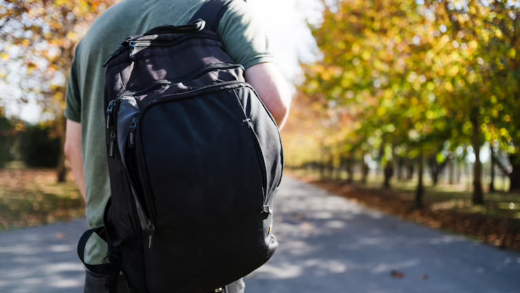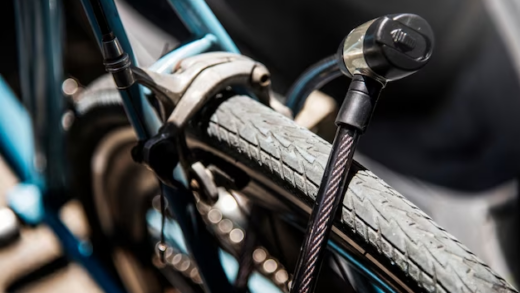Whether you’ve forgotten the combination or need to reset the code for security reasons, knowing how to reset a bike lock is an essential skill for any cyclist. In this comprehensive guide, we’ll explore various methods, from combination locks to key-based mechanisms, ensuring your bike’s safety and providing you peace of mind.
The Importance of Bike Lock Resetting
Before we delve into the step-by-step methods, it’s crucial to understand why bike lock resetting is vital. A compromised lock can leave your bike vulnerable to theft. By mastering the process, you can regain control over your bike’s security.
Different Types of Bike Locks
Combination Locks
Combination locks are a popular choice due to their convenience and simplicity. These locks require a numeric code to unlock. However, situations arise where you might need to reset the combination.
Method 1: Default Code Reset
If you’ve forgotten your combination, don’t fret. Most combination locks have a default factory-set code. Check the lock’s manual or manufacturer’s website to find the default code. Once you’ve entered it, follow these steps:
- Insert the default code;
- Turn the dials to the new desired combination;
- Pull the shackle to open the lock.
Method 2: Manual Reset
To enhance security, you might want to create a custom combination. Follow these steps:
- Insert the current combination;
- Find the reset button, usually located on the bottom or side;
- Press the reset button and change the digits to your desired combination;
- Pull the shackle to lock the bike.
Key-Based Locks
Key-based locks offer robust security and are more challenging to manipulate. However, you might need to reset them due to lost keys or concerns about unauthorized access.
Method 1: Lock Replacement
If you’ve lost your keys or suspect a security breach, consider replacing the lock altogether. Follow these steps:
- Purchase a new lock that fits your bike’s requirements;
- Carefully remove the old lock using appropriate tools;
- Install the new lock according to the manufacturer’s instructions.
Method 2: Rekeying
Rekeying involves changing the lock’s internal pins to match a new key. This method is more complex and may require professional assistance.
- Remove the lock from your bike;
- Disassemble the lock to access the pins;
- Replace the pins according to the new key’s specifications;
- Reassemble the lock and test it with the new key.
Combination vs. Key-Based Locks
| Aspect | Combination Locks | Key-Based Locks |
|---|---|---|
| Convenience | Easier to reset | More secure, but resetting is complex |
| Security | Moderate security | High security |
| Resetting Process | Simple procedures | Replacement or rekeying required |
| Vulnerability | Prone to guessing and brute-force attacks | Durable against manipulation |
Tips for a Successful Reset
- Plan Ahead: Before starting the reset process, ensure you have the necessary tools and information;
- Document the Code: If you reset a combination lock, make sure to note down the new code in a safe place;
- Professional Help: For key-based locks, consider seeking professional locksmith assistance for intricate tasks;
- Test Thoroughly: After resetting, always test the lock to ensure it functions correctly.
Exploring Advanced Locking Mechanisms
Smart Locks for Bikes
Smart locks have revolutionized bike security, offering features like remote unlocking via smartphone apps and GPS tracking. Resetting a smart lock involves digital methods rather than manual adjustments.
Method: App-based Reset
- Open the corresponding app on your smartphone;
- Access the lock settings or reset option;
- Follow the on-screen instructions to reset the lock’s code or settings;
- Sync the changes with the lock.
U-Locks and Cable Locks
U-locks and cable locks are common choices for urban cyclists. These locks might not require regular resetting, but understanding their maintenance and potential reset processes is essential.
Maintenance: Preventing Reset Need
- Regularly lubricate the lock mechanism to prevent jamming;
- Inspect the lock for signs of wear or damage;
- Keep the lock clean and free from debris.
Troubleshooting Lock Resetting Issues
Dealing with Forgotten Combinations
If you find yourself unable to remember your newly set combination, follow these steps to regain access:
- Stay Calm: Avoid panic and frustration. Take a moment to clear your mind;
- Check Your Notes: Look for any notes or records of the new combination;
- Default Code: If no notes are available, try the default code (if applicable);
- Manufacturer Assistance: Contact the lock manufacturer’s customer support for guidance.

Handling Jammed Locks
A jammed lock can be frustrating, but rushing the reset process could worsen the situation. Here’s what to do:
- Assess the Jam: Identify the source of the jam—dirt, debris, or a damaged mechanism;
- Lubrication: Apply a lubricant specifically designed for locks;
- Gentle Manipulation: Gently try to move the lock’s parts back and forth to release the jam;
- Professional Help: If the lock remains jammed, seek help from a professional locksmith.
Comparison Chart: Locking Mechanisms Overview
| Lock Type | Security Level | Resetting Complexity | Additional Features |
|---|---|---|---|
| Combination Locks | Moderate security | Simple procedures | Customizable combinations |
| Key-Based Locks | High security | Complex procedures | High resistance to manipulation |
| Smart Locks | High security, digital | App-based reset | Remote access and GPS tracking |
| U-Locks | High security | Rare resetting need | Durable and resistant |
| Cable Locks | Moderate security | Rare resetting need | Flexible and lightweight |
Enhancing Bike Lock Security: Tips and Insights
Mix and Match Locks
For optimal protection, consider using multiple types of locks. Pairing a U-lock with a cable lock, for example, offers increased security by targeting different vulnerabilities.
Choosing the Right Lock
Evaluate your bike’s value, the crime rate in your area, and your personal convenience when selecting a lock. Higher security locks may be bulkier, so find the balance that suits your needs.
Regular Maintenance
Perform routine checks and maintenance on your bike lock. Lubricate moving parts, inspect for signs of tampering, and ensure your lock remains in optimal condition.
Conclusion
Mastering the art of resetting a bike lock empowers you with the ability to secure your valuable bicycle effectively. Whether you’re dealing with a combination lock or a key-based mechanism, the methods outlined in this guide provide you with the knowledge needed to safeguard your bike.
FAQs
Yes, using the default factory-set code or contacting the manufacturer can help.
Rekeying is cost-effective and maintains the same lock’s security level, while replacement offers a fresh start.
It’s recommended to change the combination periodically or if you suspect a security breach.
It’s best to resolve the jamming issue first. Attempting a reset on a jammed lock can worsen the problem.
Keep a record of the new code in a secure place or consider seeking professional help.






